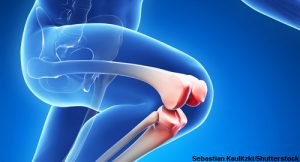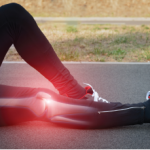 Increasing physical activity among people with knee osteoarthritis (OA) could substantially reduce their disease burden and potentially avert adverse health conditions, such as cancer, cardiovascular disease and diabetes. This key takeaway is from a study by Losina et al. published in Arthritis Care & Research, which looked at the effects of low physical activity on people with OA and the health benefits linked to higher levels of physical activity.1
Increasing physical activity among people with knee osteoarthritis (OA) could substantially reduce their disease burden and potentially avert adverse health conditions, such as cancer, cardiovascular disease and diabetes. This key takeaway is from a study by Losina et al. published in Arthritis Care & Research, which looked at the effects of low physical activity on people with OA and the health benefits linked to higher levels of physical activity.1
Previous studies have described the prevalence of physical activity among knee OA patients, as well as an association between physical activity, pain and function in these patients. This study used a larger lens to capture the broader effect of physical activity among patients with knee OA.
“We offered a big picture view of the impact of low physical activity on the remaining quality and duration of life [in OA patients],” says the study’s lead author Elena Losina, PhD, Robert W. Lovett Professor of Orthopedic Surgery at the Harvard Medical School, director of the Policy and Innovation eValuations in Orthopaedic Treatments (PIVOT) Center, and co-director of the Orthopedic and Arthritis Center for Outcome Research, Department of Orthopedic Surgery, Brigham and Women’s Hospital, Boston.
Gregory W. Heath, DHSc, MPH, Guerry Professor in the Public Health Program, University of Tennessee, Chattanooga, says this study complements what other studies have documented about the link between decreased physical activity and reduced levels of health-related quality of life. Unique to this study is the use of mathematical modeling “to further express these risks of inactivity and benefits of physical activity across the population as a whole, as well as [to] explore intra-individual differences in a measure called quality-adjusted life-years, which seeks to estimate the burden of inactivity in terms of the quality of life of the individual,” he says.
Physical Inactivity’s Effects on Disease Burden
To provide broader view of physical activity on disease burden in people with OA, researchers estimated health-related quality of life losses attributed to inactivity or insufficient levels of physical activity in a cohort of adults with knee OA, aged 45 and older, in the U.S. Estimates were based on person-level projections obtained from the OA Policy (OAPol) model, a computer simulation model of knee OA natural history and treatments. These individual and population-based projections were derived for different sex- and ethnicity-stratified groups.
Quality-adjusted life-year was the metric used to estimate health-related quality of life losses due to physical inactivity, as well as health benefits linked to higher levels of physical activity. The study defined physical activity levels based on the amount of time subjects engaged in moderate to vigorous physical activity in a week: inactive (0 or 0–10 minutes per week), insufficiently active (1–149 or 10–149 minutes per week) and active (more than 150 minutes per week).
The input parameters for the OAPol model were derived from the Osteoarthritis Initiative and Centers for Disease Control and Prevention (CDC) data and included the proportion of the U.S. population with knee OA aged 45 years and older who are inactive, insufficiently active and active.
Among the 13.7 million persons identified as living with knee OA in the U.S., the study found 48% were inactive, 41% insufficiently active and 11% active. When estimating the quality-adjusted life-years lost, the study found 4.4 million quality-adjusted life-years were lost to physical inactivity relative to activity, 1.3 million quality-adjusted life-years were lost due to physical inactivity relative to insufficient activity and 3.2 million quality-adjusted life-years were lost due to insufficient activity relative to activity.
When looking only at losses compared with activity, an average of 0.55 quality-adjusted life-years per person were lost due to inactivity or insufficient activity over the remaining duration of the patients’ lifetimes—or a total of 7.5 million quality-adjusted life-years. The highest quality-adjusted life-year losses were seen in Black Hispanic women (0.76 quality-adjusted life-year per person), with about a 20% higher loss burden in all women, regardless of race and ethnicity than in men.
According to Dr. Losina, obesity plays an important role in the highest burden of disease found in this demographic group. “This population group bears the highest losses due to the lowest [participation] in physical activity and the higher prevalence of obesity,” she says.
“These data point to the importance of tailoring physical activity interventions, which, even with modest efficacy, could lead to substantial aversion of quality-adjusted, life-year losses for each demographic group,” she says.
Increased Physical Activity & Disease Burden
In addition to looking at quality-adjusted, life-years lost due to inactivity or insufficient activity, the investigators examined the effect of increased physical activity on quality-adjusted life-years and other health outcomes. They found 871,541 potential quality-adjusted life-years would be saved if 20% of inactive OA patients were active. Even a 5% increase in activity among inactive patients would save 217,885 quality-adjusted life-years.
Additionally, cancer (95,920 cases), cardiovascular disease (222,413 cases) and diabetes (214,725 cases) could potentially be prevented if 20% of inactive patients were active.
These numbers underscore just how important physical activity is for knee OA patients. “Knee OA treatment guidelines point to the established evidence suggesting that physical activity and exercise improve pain among knee OA patients,” says Dr. Losina. “Reminding patients about the importance of engaging in physical activity by briskly walking 20–30 minutes per day and offering some actionable recommendations on how to achieve those goals may help patients with knee OA reach their physical activity goals, improve their health, prevent further chronic diseases and improve and extend their life.”
Dr. Heath emphasizes that physical activity interventions for people with knee OA must be tailored and adapted to each patient based on their functional and chronic disease status. He underscores the need for physical activity across populations—in every neighborhood and community in the U.S. “It takes more than a village to move our people from inactivity to activity,” he says. “Every city, town, village and neighborhood can and should participate to change the current normative climate of inactivity to one of activity.”
That said, Dr. Heath notes the need for attention to the role of physical activity early in a person’s life cycle, which “may contribute to controlling the risk factor of excess weight and, thus, the potential incidence of OA.”
Mary Beth Nierengarten is a freelance medical journalist based in Minneapolis.
Reference
- Losina E, Silva GS, Smith KC, et al. Quality-adjusted life-years lost due to physical inactivity in the United States osteoarthritis population. Arthritis Care Res (Hoboken). 2019 Jul 26;10.1002/acr.24035. [Epub ahead of print].


